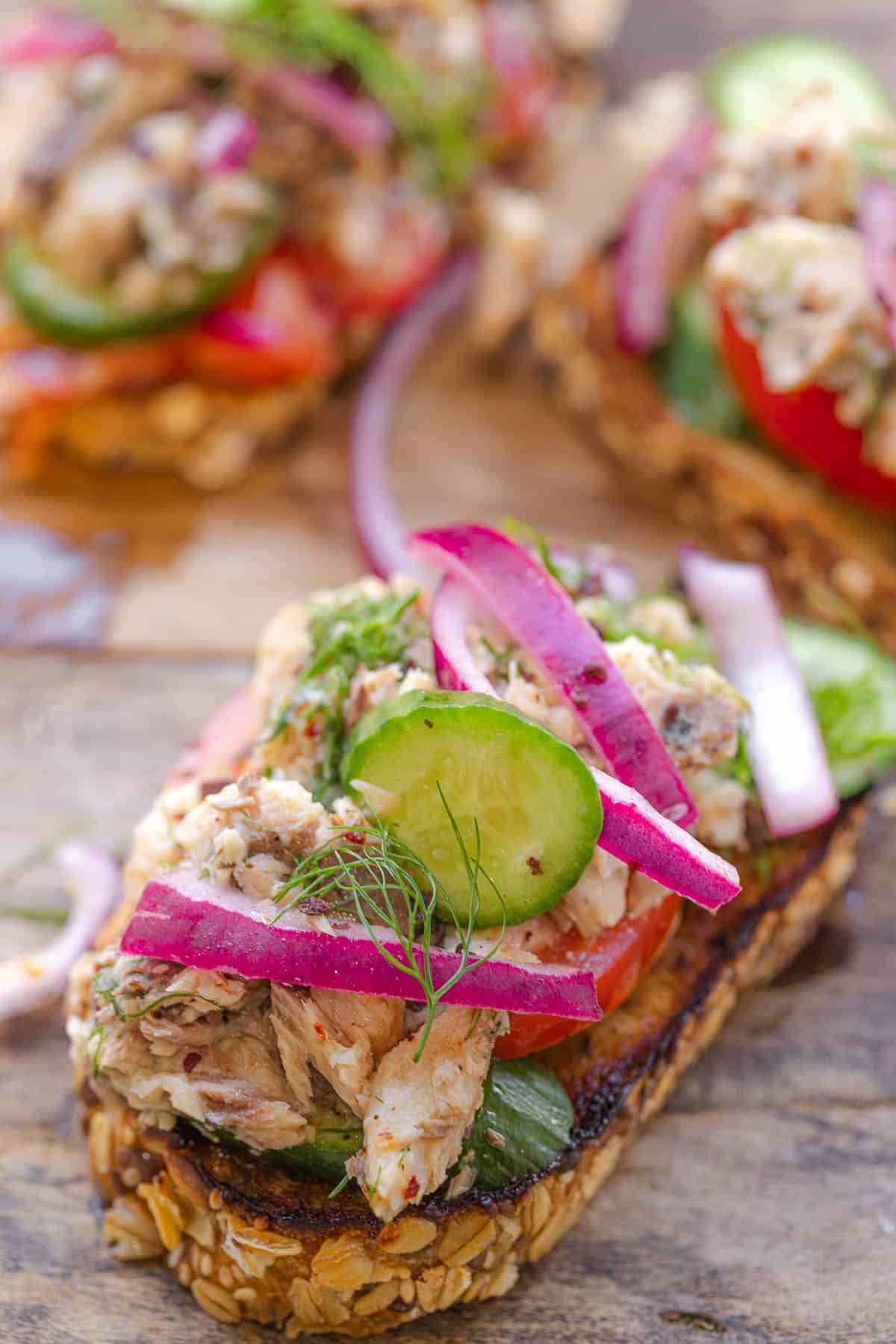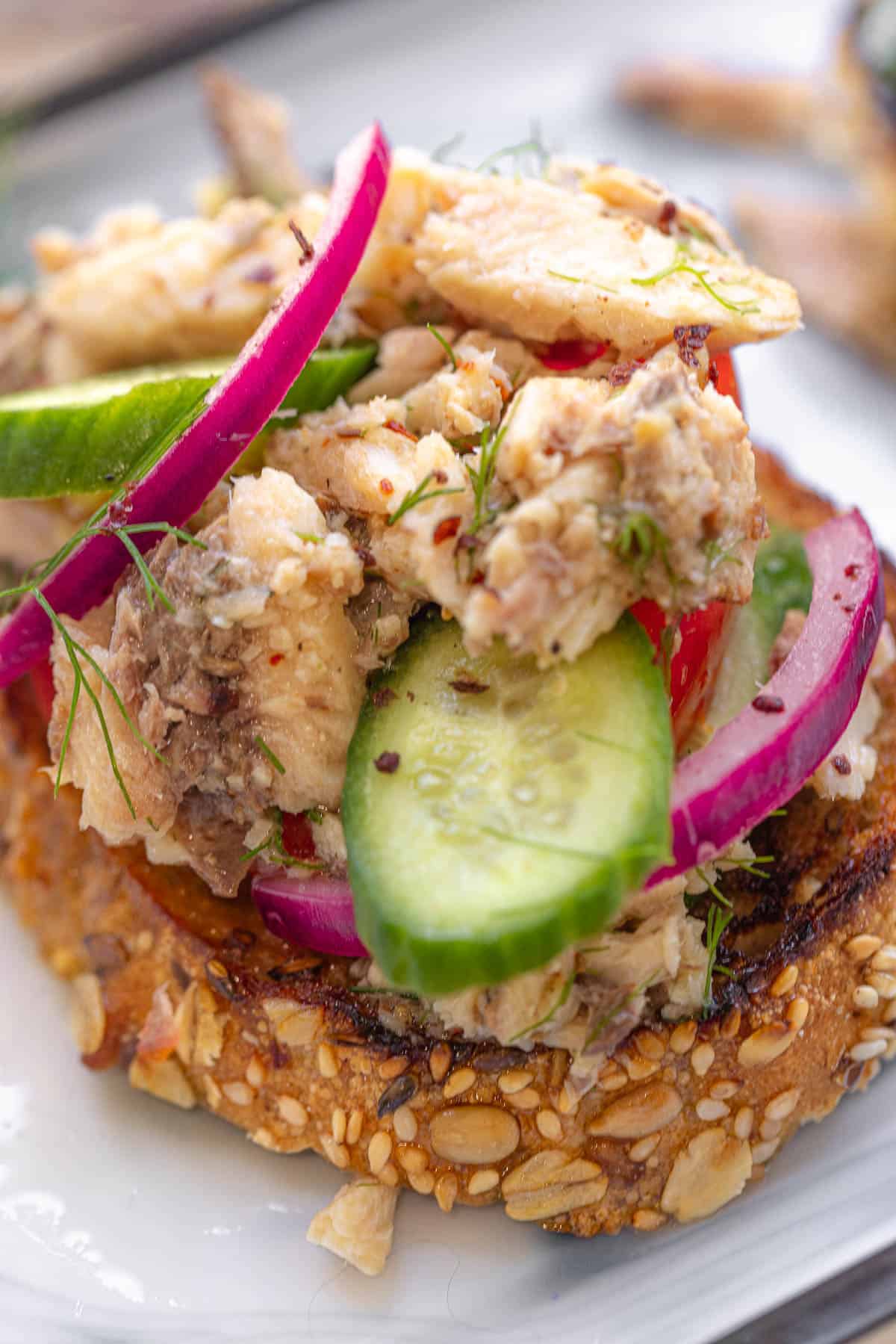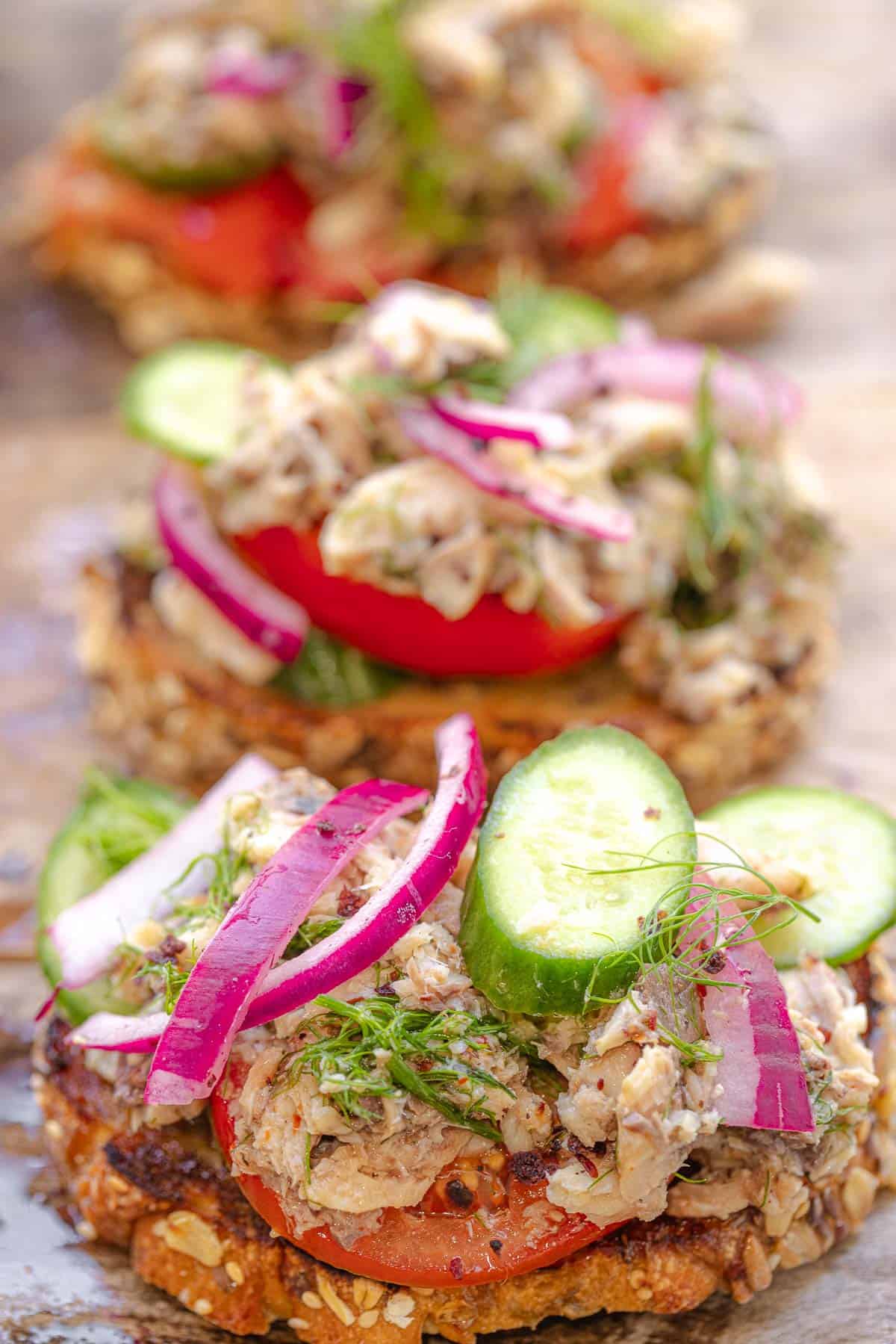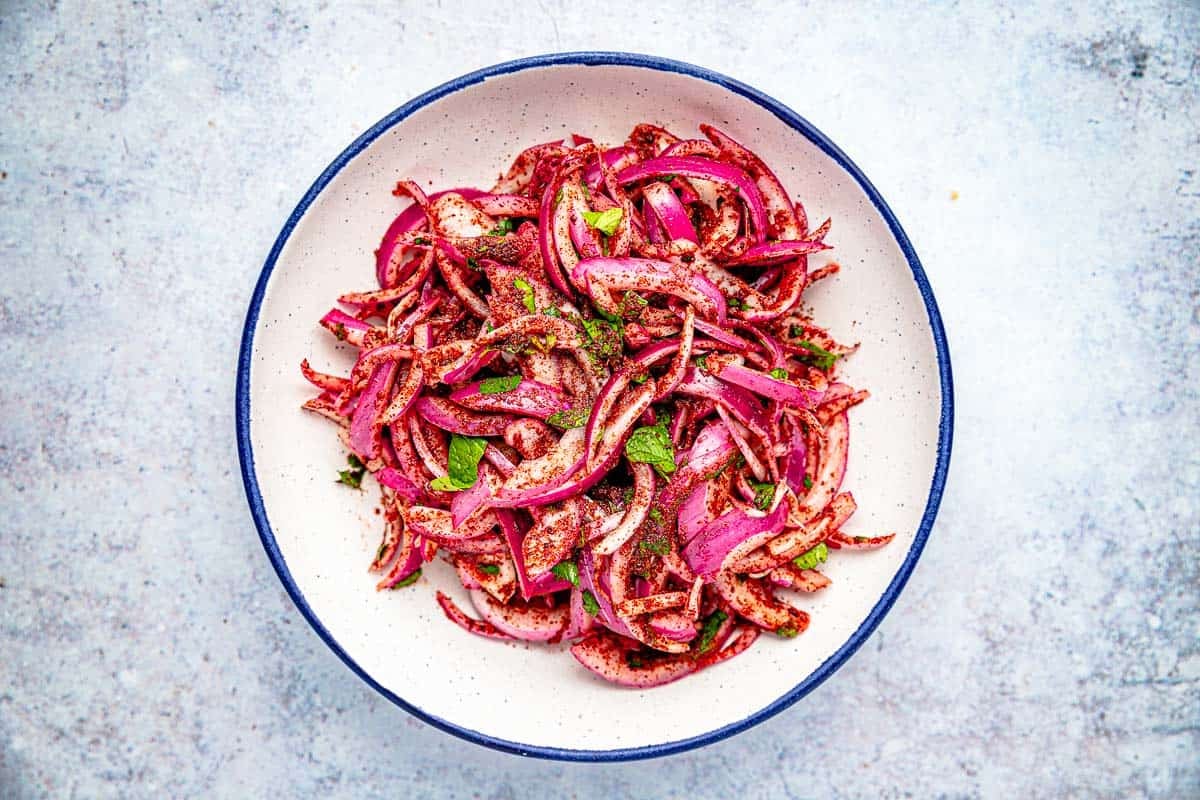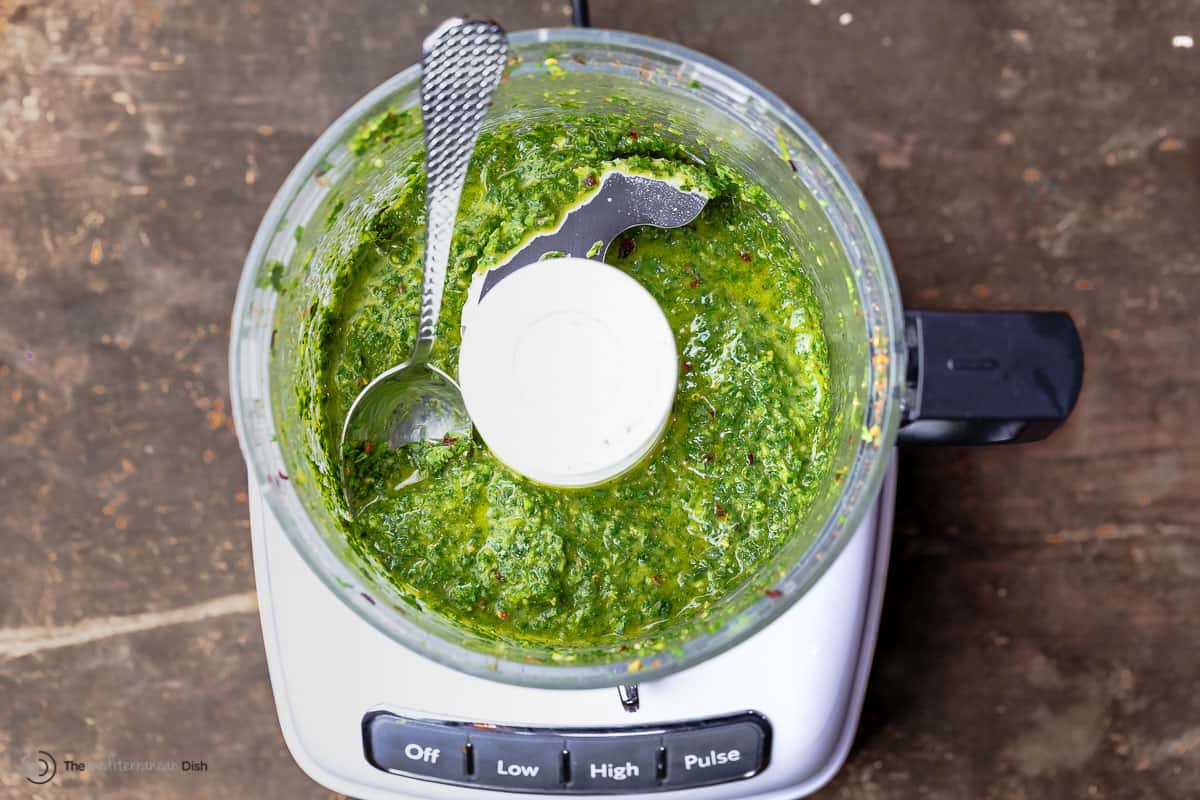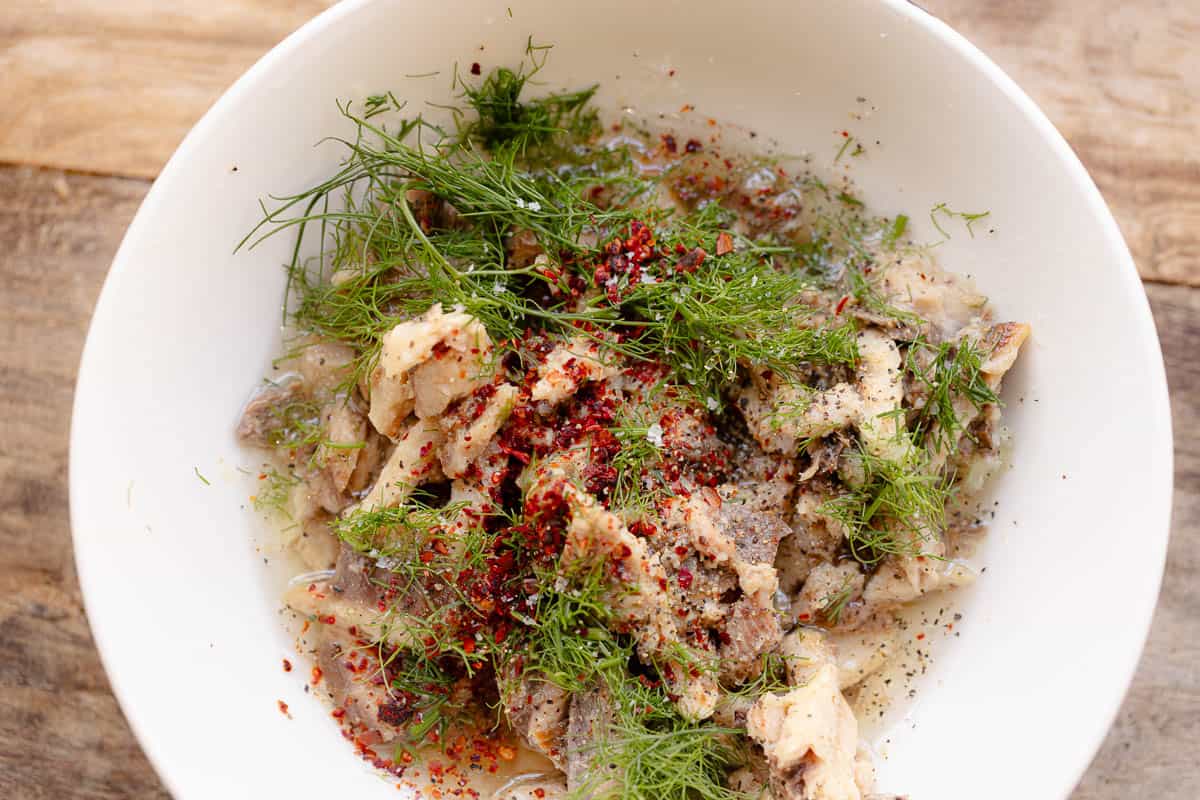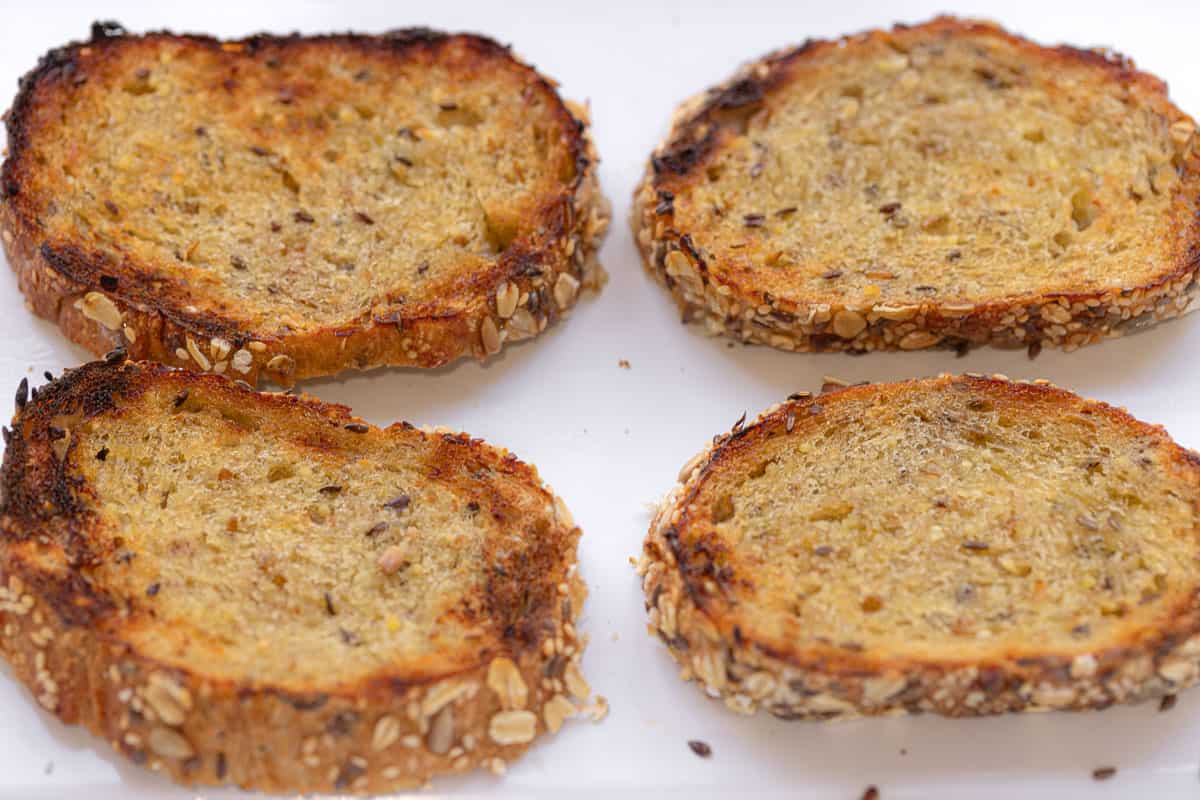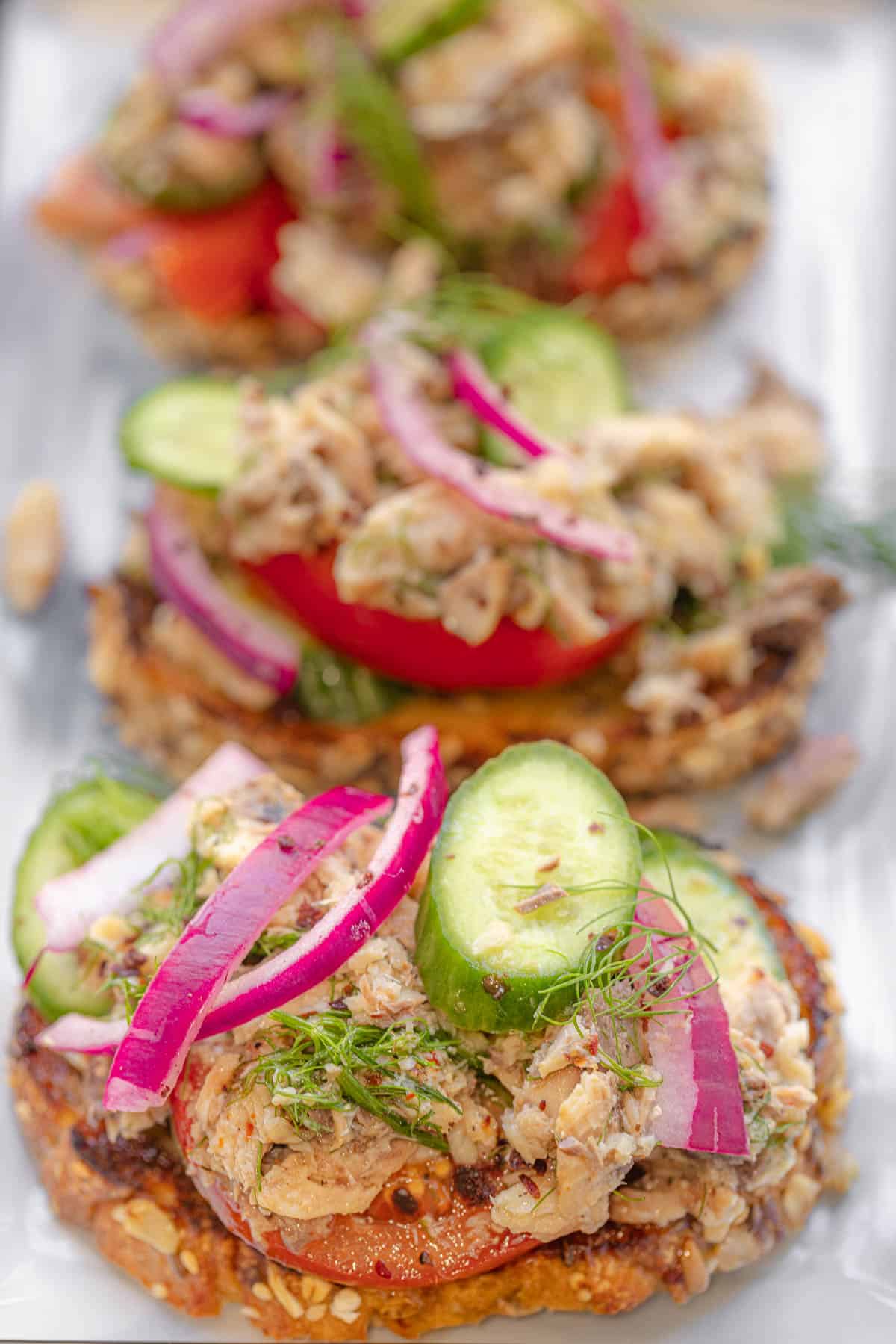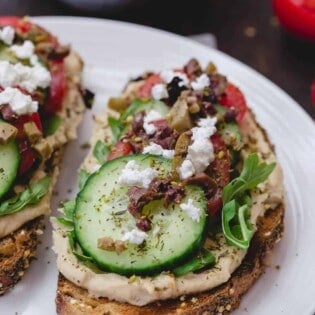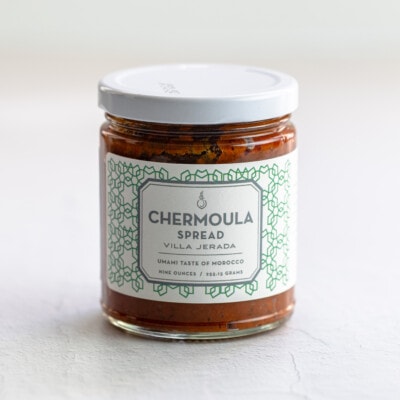I adore the pungent flavor of quality omega 3-rich sardines packed in extra-virgin olive oil. They’re so convenient too! An affordable and healthy snack to keep stocked. You can easily turn sardines into a small meal. All you need is a drizzle of good extra-virgin olive oil (I recommend something bold and peppery like the Early Harvest Greek EVOO from our shop) and a generous squeeze of lemon. But I like to dress it up just a touch with bold Mediterranean flavor, like herby chermoula and bright pickled red onions with sumac. Rather than leave the sardines whole, I break it up and make an umami-rich spread with my favorite seasonings. This makes for easy snacking, with no need to do the awkward dance of balancing the sardine with your pointer finger as you go. And you can pack way more flavor and balance in each bite! I have a similar chunky sardine spread on page 63 of my cookbook with olives, red bell pepper, and cilantro. This recipe takes on a North African vibe, which is super lemony and herbaceous. Tomato and cucumbers bring a nice freshness and texture and pickled red onions cut through the richness of the toast. Serve for a quick snack, lunch, or casual party appetizer, perhaps next to some ouzo!
Are Sardines Good For You?
Yes, sardines are good for you. In fact, the benefits of tinned fish go well beyond their convenience and affordability. Canned sardines are a healthy source of protein, vitamins, minerals, and omega-3 fatty acids. According to the USDA, one small (3.75 oz) can of sardines has 22.6 grams of protein–that’s more protein per gram than chicken breast! With that said, it’s always important to check the label to make sure you’re getting a high quality product. As I say in my cookbook, “Canned sardines are generally accessible and relatively affordable, but this is one case where, as your friend, I urge you to pay a little bit more for quality, wild-caught sardines; you’ll get better flavor and fewer preservatives.”
How to Eat Sardines
You can eat sardines straight out of the can–including the bones–but toast or crackers are a welcome addition. For a 2-minute healthy snack, I especially like them on pita chips with a paper-thin slice of lemon (peel and all), drizzle of olive oil, sprinkle of fresh herbs, and pinch of flaky salt.
Can You Eat Sardine Bones?
Sardine bones are completely edible. They’re so soft and tiny you likely won’t even notice them, and they’re actually a good source of calcium. Per 100 grams, bone-on sardines have 382 mg of calcium compared to 145 mg for boneless skinless sardines. But if that freaks you out, by all means buy the boneless/skinless option.
Ingredients for Sardine Toast
Sardine toast is meant to be easy, tweak this list according to what you have. No fresh produce on-hand? No problem, just leave off the tomato and cucumber. Any tart pickles you have will do, or you can even slice a lemon very thinly instead (more tips below).
Sardines: I prefer oil-packed sardines for a richer flavor. The bones are edible but boneless skinless is always an option. Dill adds freshness and lemony flavor. Aleppo pepper adds a mild kick–read all about it in our guide, What is Aleppo Pepper and How to Use It. Or try it for yourself at our shop! Lemon zest and juice adds acidity for balance Kosher salt and black pepper enhance the flavors of the other ingredients. Olive oil holds the sardine spread together and adds richness. Use a high-quality extra virgin variety, like our Spanish Hojiblanca for a peppery kick. Bread: Go for a whole loaf of rustic, full-flavor bread, like tart sourdough or savory whole grain so you can slice satisfyingly thick slabs. Tomato adds acidity, texture and freshness. I prefer a juicy variety that stays firm when ripe (particularly in the cooler months), like Roma or sliced grape tomatoes. Cucumber adds a refreshing quality. I like Persian cucumbers, which are sweeter with tender skin. If you’re working with a standard slicing cucumber, peel off the waxy skin before slicing. Chermoula is optional. The North African condiment adds an extra bright and herbaceous quality. You can make an easy 5-minute chermoula with parsley, cilantro, garlic, ground coriander, red pepper flakes, paprika, saffron (optional), salt, lemon, and olive oil. Or use a store-bought red or green version, like the red chermoula from our shop. Pickled onions add a punchy acidity for balance. I prefer to make my own pickled red onions with red onion, red wine vinegar, sumac (from our shop), salt, fresh parsley, and mint. The flavor is much deeper than store-bought, and they last in my fridge for up to a week.
Swaps and Substitions
Sardine toast is a delicious healthy snack recipe, but it’s not meant to be complicated. Dig into your pantry for what you have–as long as you put something bright and pickle-ey or lemony in there for balance it’ll all work out. Here are some suggestions:
Sardines: Swap canned tuna. Dill: Use any tender herbs you have on hand, like cilantro, parsley, or mint. Aleppo pepper: Swap red pepper flakes. Sourdough or whole grain bread: Really any crusty bread works here, like French baguette or ciabatta. Tomato and cucumber: You can just leave them off. Or add arugula or thinly sliced radish for freshness. Chermoula: Leave it off, or swap with another bright and herby spread like chimichurri. Pickled onions: Use tart (not sweet) store-bought pickles, like sliced cornichons, jalepeño or pepperoncini. Or substitute with chopped preserved lemon, capers, olives–anything super tart or briny for balance. Lemon: Swap lime.
How to Make Sardine Toast
This healthy snack could not be easier to make. I like my sardines to have a little texture to them, I prefer a chunky (rather than smooth) spread!
Make the Pickles and Chermoula (optional)
Make the quick-pickled red onions (or use storebought and skip this step). Halve and thinly slice a red onion. Add to a medium bowl along with 1/2 cup red wine vinegar, 3 tablespoons sumac, 1 tablespoon kosher salt, and 2 tablespoons each of chopped parsley and mint. Use your hands to rub the spices into the onions, then cover and set in your fridge for at least 30 minutes (or up to 1 week). Make the chermoula sauce (optional) or use our favorite jarred chermoula. To the bowl of a food processor, add 1 cup each of parsley and cilantro (you can keep the stems, just trim off the very end). Add 1 to 2 garlic cloves, 1 teaspoon coriander and red pepper flakes, 1/2 teaspoon ground ginger, 1/4 teaspoon ground saffron threads (optional), the zest and juice of 1 lemon, and a big pinch of salt. Pulse the food processor until combined, then set the speed to low as you drizzle in 3/4 cup olive oil. Don’t over-process it, it should have a little texture to it at the end.
Make the Sardine Toast
Make the sardine mixture. Drain a 6 to 7-ounce can of oil-packed sardines and add to a small bowl. Use a fork to break up the sardines into large pieces. Add 1/4 cup finely chopped dill, 1/2 to 1 teaspoon Aleppo pepper, the zest and juice of 1 lemon, and a big pinch of salt and pepper. Add a small drizzle of olive oil and toss to combine. Toast the bread. Brush 4 large slices of bread with olive oil on both sides, then arrange on a baking sheet. Turn your oven to broil and add the bread to the center rack. Watch closely, turning over with a pair of tongs, until the bread is crispy and charred on the edges. Remove from the oven. Make the sardine toast. Thinly slice 1 large tomato and 2 cucumbers into rounds. Arrange over the toasted bread. Add the sardine mixture on top. Drizzle with the chermoula, if using, and finish with a few pickled red onions.
What to Serve with Sardine Toast
I usually turn to this sardine toast for a healthy snack or light meal when I’m getting to the dregs of my last grocery run. But all you need is a big salad for a nutrient-rich meal, like balela or tabouli. It also goes great with a cup of soup. Try it with a vegetarian option like Cabbage Soup or Turkish Red Lentil Soup. For a dinner party, you can make the sardine spread a few hours ahead. Store covered in your fridge in a separate container from the toppings. Wait to spread the sardines until the final moments so the bread stays crispy. Then toast the bread, assemble, and serve as an appetizer with mezzes you can prep in advance. You have the bread covered, so go for something without toast or crackers, like dolmas and Greek salad skewers. Browse all Mediterranean recipes.
Pan Con Tomate (Spanish Tomato Bread)
Smashed Chickpea Toast
Must-Try Smoked Salmon Sandwich with Feta
Mediterranean-Style Breakfast Toast
Visit Our Shop Bring bold Moroccan flavor with this bright and herbaceous spread made with sun-dried tomatoes, lemon, and warming spices



